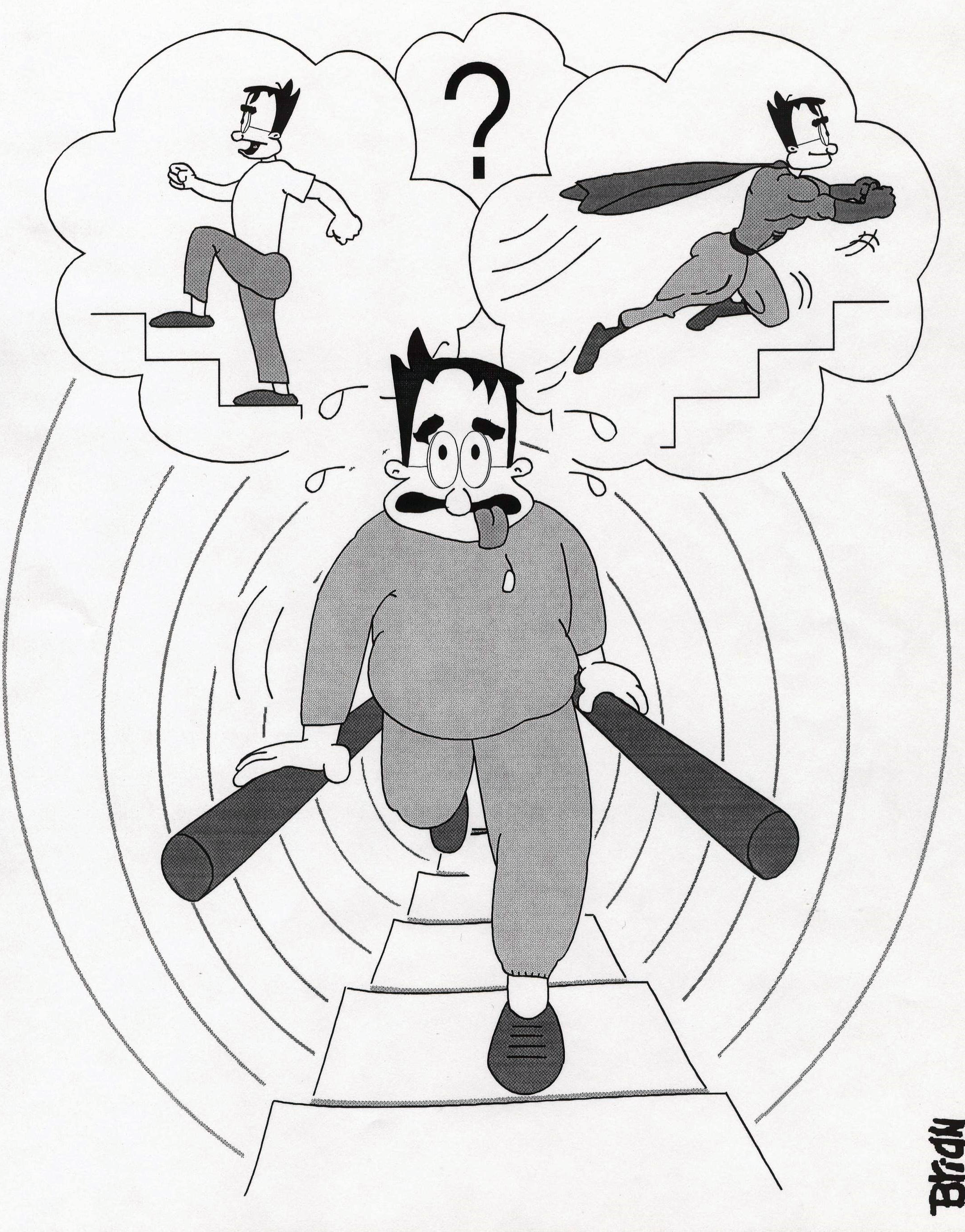I hate exercise!
I really hate exercise! That’s what patients tell me when we start talking about managing their weight. And I tell them exercise is not what they think.
Everyone knows that exercise is key to our physical and mental health but almost everyone has the wrong idea about what exercise is. And the misconceptions people hold are what get in the way of their ability to integrate healthy exercise into their lives—permanently. Perhaps the most toxic misconception is the belief that to experience the benefits of exercise you must do it hard!

That is simply not true.
Exercise properly defined
Strenuous workouts certainly have an impact on physical strength and stamina. However, if you are not already in great condition, the most likely impact of a strenuous workout will be the decision to put it off for “next week.” (Sound familiar?) The truth is the only exercise that will give you health benefits is one that you do—and that exercise is the one that is not overly hard and at least somewhat enjoyable or interesting. Or if not enjoyable or interesting, one that you can watch a film, read, or listen to music while doing!
Be smart. Start where you are!
Just as you cannot arrive at a destination 600 miles away without traveling the first mile, then the second, the third and so on, you cannot go from sedentary to workout wonk without taking the intermediate steps. If you try to skip those steps, we’re back to aching (or worse!) body parts and quickly quitting. Be smart about this. Consider where you physically are right now, and commit to taking the first steps before signing up for programs and gyms designed for where you want to be down the road.
These important first steps follow two paths. One is to increase the amount of Natural Activity in your day-to-day life, and the other is to increase the amount of Structured Activity in your life.
Natural Activity
Natural activity is the movement that takes you through your day. Walking to the mailbox, cleaning your home, playing with your dog all count. You will be amazed at the impact an increase in natural activity can have on your fitness level. Here are 10 ideas to get you started. Once you focus on this, a hundred more will come to mind.
- Use your treadmill, stair-stepper, rowing machine, etc. while watching shows.
- Walk down the stairs instead of using the elevator.
- Rather than phone, text, or email, walk to your co-worker’s desk or office to communicate.
- Find the furthest parking space in the lot and use it.
- Walk the length of the mall once or twice before you begin shopping.
- Plan two-minute breaks every hour to stand up, stretch, and walk around the room. Set an alarm to remind yourself.
- At work or school, use the restroom at the far end of the building or on another floor.
- Walk to the next bus stop before getting on the bus.
- Walk the long way around to your destination in department stores.
- Channel your inner child and go play outside!
If you truly want to get a handle on how much natural activity you are adding, track it with a pedometer or smart-watch. But be smart about and if you think the number is low, target small easy daily increases so you can keep them going.
Structured Activity
Unless your natural lifestyle is one of physical labor, to improve your fitness you will need also to add structured activity to your life. However, you absolutely must start where you are right now. Here is how A Diet is the Last Thing You Need: Weight Loss & Maintenance Answers lays it out, starting with first determining what you are capable of right now:
If your current capability is a three-minute slow stroll around your living room, then your first goal is to stroll 3½ minutes around your living room every day until that becomes easy. Then increase it to four minutes and repeat daily until you can increase it a bit more. The same strategy goes for strength building. Your initial goal will be to lift/pull/push as many pounds, or ounces, as you can with a little exertion, and as that gets easier, increase the target number of repetitions and/or poundage, or ounces if that is where you start, little by little.
On of my favorite stories about the power of small steps is that of Marta who came to me when she was morbidly obese, almost completely sedentary, and yearning for a more satisfying lifestyle.
Marta had a treadmill that had been standing in a corner of her bedroom for a few years. She had used it religiously for several days right after she bought it and, since then, it had served her very well as a clothes rack. Her first exercise assignment was to clear the clothing off the treadmill. It took a couple of weeks of repeating this assignment before she finally did it. Having achieved that success, her next assignment was to walk on the treadmill at a slow pace for one minute every weekday for the next week. It took another few weeks for Marta to (remember to) hit this target. Once she did, and felt pretty pleased with herself I might add, we increased her daily target to 90 seconds. This was easier; she hit it the first week and also reported that she went over the target a few times.
Over the course of the next few months, we increased Marta’s weekdays target from 90 seconds to two minutes to 2.5 minutes to three minutes; then to five minutes, then seven, then 10, and so on. She also slowly increased her speed. Small increases meant Marta could always achieve the target without pain. About six months after clearing the laundry off her treadmill, Marta reported that she had signed up for a 5K fundraiser walk—which she completed!
Motivated or compulsive?
As you work toward increased physical activity and better weight management, please stay alert for the possibility that your motivation may turn into compulsion. The two tend to look alike as you track your activity and feel good about your progress. However, there is a very big and very critical difference between them.
Motivation makes you feel energized and interested in doing something. In terms of exercise, you have the desire to follow through on your plans and feel good when you do. When you do not follow through, you know that sometimes other priorities take precedence or you have encountered obstacles that you need to resolve. You may be disappointed in circumstances or yourself, but you are not devastated.
Compulsion drives you to do something whether or not conditions make it a bad choice, and causes distress if something prevents you from doing it. Exercise compulsion is common among people with eating disorders. As they strive to achieve often-unachievable physiques (see Eating Disorders are Tough to Fight!), the push to exercise can become so strong that they continue to do it despite injuries, dangerous conditions, or other circumstances that make it unhealthy.
If you find yourself shifting from motivated to compulsive, please reach out! Ask a family member or friend to help you moderate. Talk to a therapist or reach out to your medical provider for a referral. If you need help finding help, Good Reads & Resources is a good place to start.
